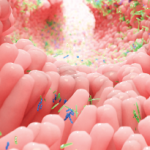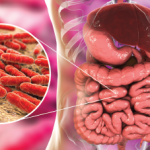BOSTON—In the early 1990s, immunologists thought there were just two types of helper T cells—Th1 and Th2—which, while not by themselves damaging, could activate other effector cells to promote disease. However, discoveries in last few years have proven that the T-cell world is actually much more diverse.
By 2000, researchers had discovered a third class of helper T cells that called into question everything known about Th1 and Th2. Surprisingly, these new cells—named Th17 because they secrete a cytokine called interleukin 17 (IL-17)—have some cytotoxic properties. Most interesting for rheumatologists, Th17 cells can display specificity for self-antigens, making them a crucial component of the development of inflammation and severe autoimmunity.
Research Background
The history, developmental properties, and potential therapeutic targets of Th17 cells were discussed by Daniel Cua, PhD, a researcher at Schering-Plough Biopharma/DNAX in Palo Alto, Calif., at the ACR/ARHP Annual Scientific Meeting in Boston last November. He also presented new data, published in the December issue of Nature Immunology (2007;8:1390-1397), showing how specific cellular environments can lead to the pathogenic properties of Th17 cells.
“There’s so much work on Th17 cells coming out now, and so fast,” Dr. Cua said. “It’s really changing the way immunologists think about inflammatory diseases.”
There’s so much work on Th17 cells coming out now, and so fast. It’s really changing the way immunologists think about inflammatory diseases.
—Daniel Cua, PhD
Practicing rheumatologists should pay attention to the new developments, he added, because the research will likely lead to effective therapies for autoimmune diseases. “There are no promises,” he cautioned, “but if you understand the disease process, then it makes sense that you can better treat it.”
Dr. Cua’s research track started seven years ago when one of his colleagues at DNAX, Robert A. Kastelein, PhD, discovered another cytokine, interleukin 23 (IL-23). In pivotal genetic experiments, they found that animals lacking IL-23 were completely resistant to collagen-induced arthritis. In other words, as the DNAX team published in Nature (2003;421:744-748), IL-23 was required for joint inflammation.
The next step was figuring out how IL-23 worked at the cellular level. Claire Langrish, PhD, then a post-doc in Dr. Cua’s lab, first investigated the nature of the cytokines the IL-23 cells were producing. “She uncovered that what was missing in the IL-23–resistant animal was in fact IL-17,” Dr. Cua explained. IL-23 is required for the production of the cytokine interleukin 17, and it’s IL-17 that’s driving the resistance to inflammation.
IL-17, a cytokine secreted by activated T cells, was first discovered by French scientists in the early 1990s. By the time of Dr. Landrish’s experiments, “we already knew IL-17 levels were elevated in patients with MS and RA,” Dr. Cua explained, “and thought that they were probably highly pathogenic.”
Dr. Cua said that at that time the field’s dogma was that Th1 cells were the only ones responsible for the induction of the autoimmune disease cascade. But Dr. Landrish’s experiments on Th17 “told us that there’s another subset of T cells that could drive autoimmune disease,” he said. “It made us completely rethink autoimmune pathogenesis.”
RA Research Sheds Some Light
Around that time, Dr. Cua teamed up with Hiroshi Takayanagi, PhD, a researcher in the immunology department at the University of Tokyo, to explore Th17’s possible role in RA. They knew that, as part of the pathogenesis of RA, activated T cells cause osteoclasts to destroy bone. What wasn’t known was how the T cells initiate this process. After several years of work, the team found that Th17 cells were responsible for linking T-cell activation with bone resorption, and that both IL-23 and IL-17 were crucial in the bone destruction phase of RA. They suggested that Th17 would be a powerful therapeutic target for RA (J Exp Med. 2006; 203:2673-2682).
“With this discovery, things really were beginning to make sense,” Dr. Cua said, because it showed that there was another immune response—other than the Th1 pathway—that could be responsible for chronic inflammatory diseases. “The key message was that bone destruction is associated with IL-23/17 pathway.”
The next phase of Dr. Cua’s research, beginning about 2003, was to try to understand the cellular regulation of Th17 cells. He performed analyses of more than 30,000 genes to look for the genes responsible for producing the transcription factors that regulated Th17, and found about six that were “specifically expressed in IL-17–producing cells and had no known functions,” he explained (Nat Immunol. 2007;8:950-957).
Making Sense of Th17
Finally, Dr. Cua discussed the possible non-pathogenic functions of Th17 cells. “A mentor told me once, ‘You can’t have a population of T cells whose only job is to induce autoimmune diseases. It doesn’t make any sense,’ ” Dr. Cua recalled. So what useful purpose could Th17 cells have? Dr. Cua looked at where in the living organism the cells are normally expressed. The primary spot is mucosal tissue. “So we’re basically saying that IL-17 cells are not always pathogenic. They have an important role in gut homeostasis,” he said.
Which led to the next research question: What is the critical factor that causes a Th17 cell to become pathogenic?
Previous studies had shown that the signaling proteins TGF-β and IL-6 somehow work together to “turn on” the pathogenic functions of Th17 cells. But Dr. Cua’s most recent experiments have shown that it’s not TGF-β and IL-6, but IL-23 that drives Th17 cells to become pathogenic.
As more and more is learned about Th17 cells, the “new kids on the block,” Dr. Cua is most optimistic about their growing clinical applications. He predicts that widespread treatment using some of these targets is still five to 10 years down the road. But he also mentioned specifically one drug—a monoclonal antibody to one of the molecular subunits of IL-23—that is currently being tested on patients with psoriatic arthritis in phase-3 clinical trials. The randomized, double-blind trials have been going on since December 2005, with good results: patients receiving the therapy showed improvement in both arthritis and psoriasis skin lesions. As Dr. Cua said excitedly about the trials, “it actually gives you goose bumps.”
Virginia Hughes is a medical writer based in New York City.

